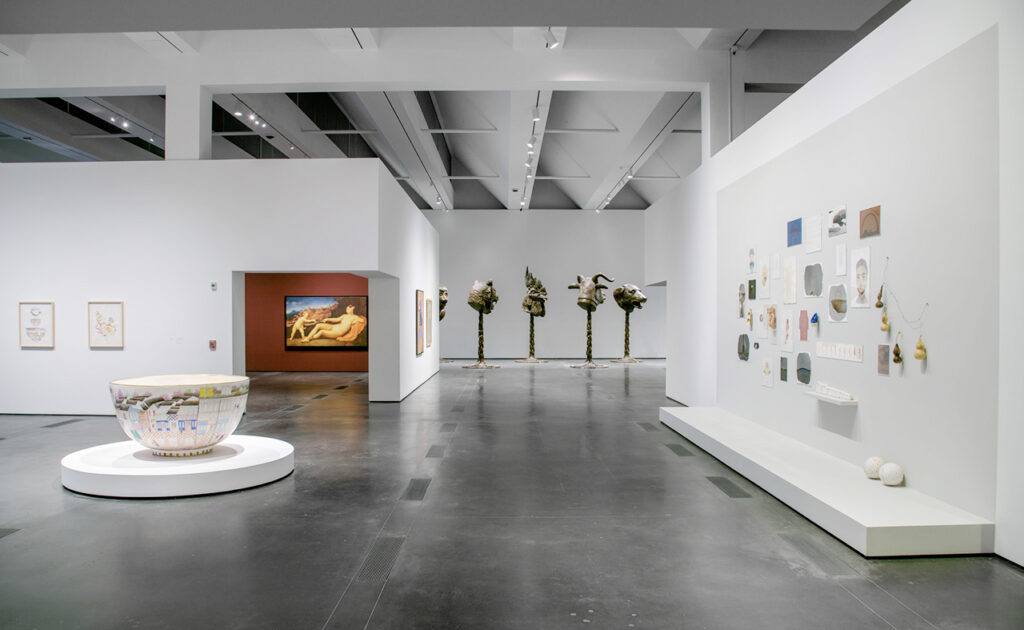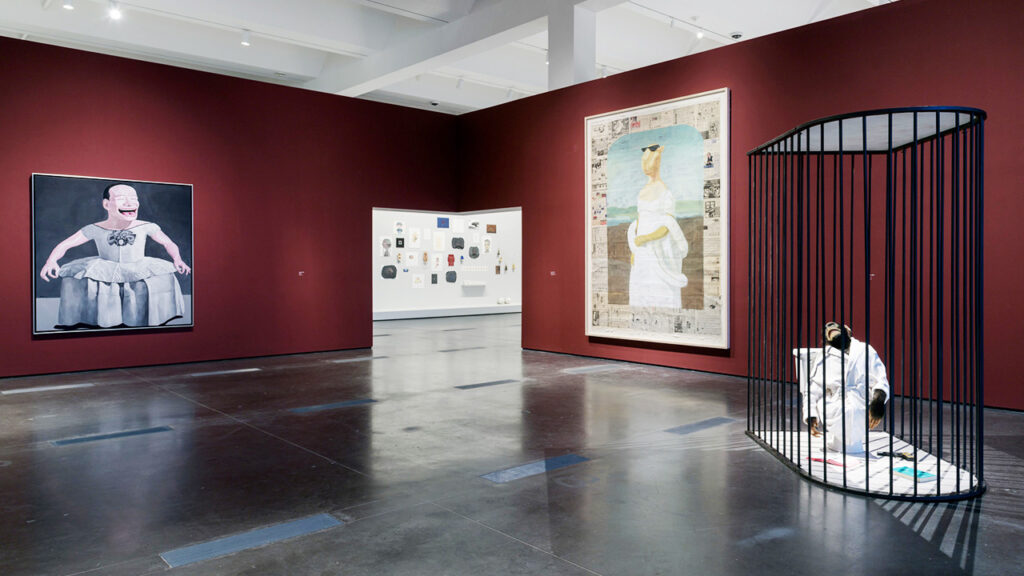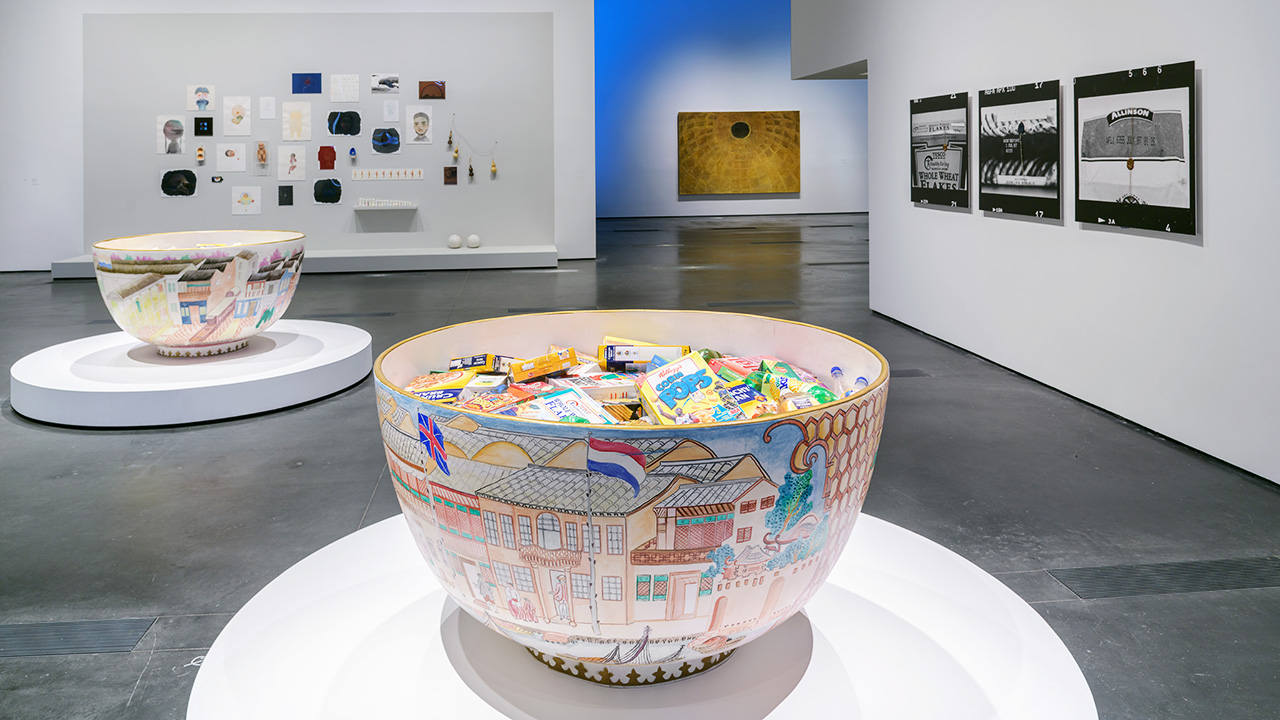First, they swapped notes on coronavirus protocols, then they shared collections. Amid the enduring diplomatic gridlock between the world’s two superpowers, the Los Angeles County Museum of Art (LACMA) and Shanghai’s Yuz Museum are pushing on, unfastening the hatches after a year of disruptions and attempting something resembling business as usual.
And for two organizations separated by the vast Pacific Ocean but united by the glamor and cultural clout of their respective home cities, normalcy means continuing a partnership and unveiling a collaborative exhibition exploring the 30-year sweep of contemporary Chinese art.
It’s the first stateside evidence of a three-way partnership signed in 2019 that included Doha’s Qatar Museums that pledged to share art and ideas across three global cities through exhibitions and curatorial projects. Legacies of Exchange: Chinese Contemporary Art from the Yuz Foundation is the product of multiyear communication and a first window onto the fruits made possible by the landmark agreement.
“This is the first in a rich series of curatorial and programmatic collaborations between LACMA and the Yuz,” says Susanna Ferrell, the museum’s Assistant Curator of Chinese Art and organizer of the exhibition. “We felt it was poignant to address how Chinese art has historically been framed in the global art world, and how Chinese artists have reflected upon the impact of outside industries and politics on China.”

Featuring 15 Chinese artists, the exhibition is “the first in a rich series of curatorial and programmatic collaborations between LACMA and the Yuz,” says Ferrell. Image: © Shi Jinsong, © Wang Guangyi, photo © Museum Associates/LACMA
Selecting from “hundreds of works” comprising the Yuz Foundation Collection, the exhibition spotlights 15 artists, all of them big hitters, many from China’s post-1989 avant-garde, the first wave of contemporary art production that emerged a decade into its Reform and Open Up policy.
Though connected to the legacy of the silk roads over which art, material goods, and ideas were exchanged nearly two millennia ago, the exhibition’s 20 works are principally organized around two themes: the influence of European and American painting that filled galleries and magazine pages in the immediate wake of the Cultural Revolution; and responses to Western branding that arrived as China shifted away from a planned economy and towards market capitalism.
On European reinterpretations, there’s Qiu Anxiong’s “The Doubter,” which responds to Jacques-Louis David’s tragic reflection on the French Revolution by placing a moribund chimpanzee in a cage, Charles Darwin’s “On the Origin of Species” at its feet; and Yue Minjun’s “Infanta,” which replaces the central figure of Diego Velázquez’s “Las Meninas” with one of his punch-pink, gleefully teeth-baring characters.

Installation view of Legacies of Exchange, featuring Yue Minjun’s “Infanta” and Qiu Anxiong’s “The Doubter.” Image: © Shi Jinsong, © Wang Guangyi, photo © Museum Associates/LACMA
On the branding front, there’s Huang Yong Ping’s “Da Xian: The Doomsday,” which critiques Hong Kong’s colonial heritage through packing oversize tea cups, decorated in British East India Company style and motif, with imported food goods, all set to expire on July 1, 1997, the handover date. Then there’s Xu Bing’s gallery-filling installation work “The Language of Smoke,” which makes its first appearance outside of China, and takes the legacy of Anglo-American tobacco importing and advertising as its target.
“Many of the artists in this exhibition came of age during that [opening up] period,” says Ferrell, “and history has a major influence on pieces in the collection, recalling events from centuries ago and reflecting upon Western presence in twentieth and twenty-first century China. Over the past three decades, the art world has rapidly globalized and there’s certainly much more global exposure for Chinese contemporary artists today.”
Symbolically, Legacies of Exchange embodies this shift, as an exhibition produced through a foundation established to promote long-term artistic exchange. Practically speaking, LACMA is broadening access and awareness by including in-gallery Chinese wall text and hosting virtual events with curators and artists featuring live translation into Mandarin.
The show builds on momentum generated by two exhibitions sent to Shanghai in the past two years and promises to further LACMA’s reputation as one of America’s leading institutions on contemporary Chinese art. Considering the fraught history of U.S.-China cultural exchange, one exacerbated by the Trump administration’s bellicose approach, Ferrell hopes visitors will leave with more than simply a better understanding of the country’s most recent slice of art history.
“My wish is that the exhibition maybe helps to cultivate some empathy, some nuance in our visitors’ understanding of China,” she says. A big wish, no doubt. But politics is, as the saying goes, downstream from culture.



